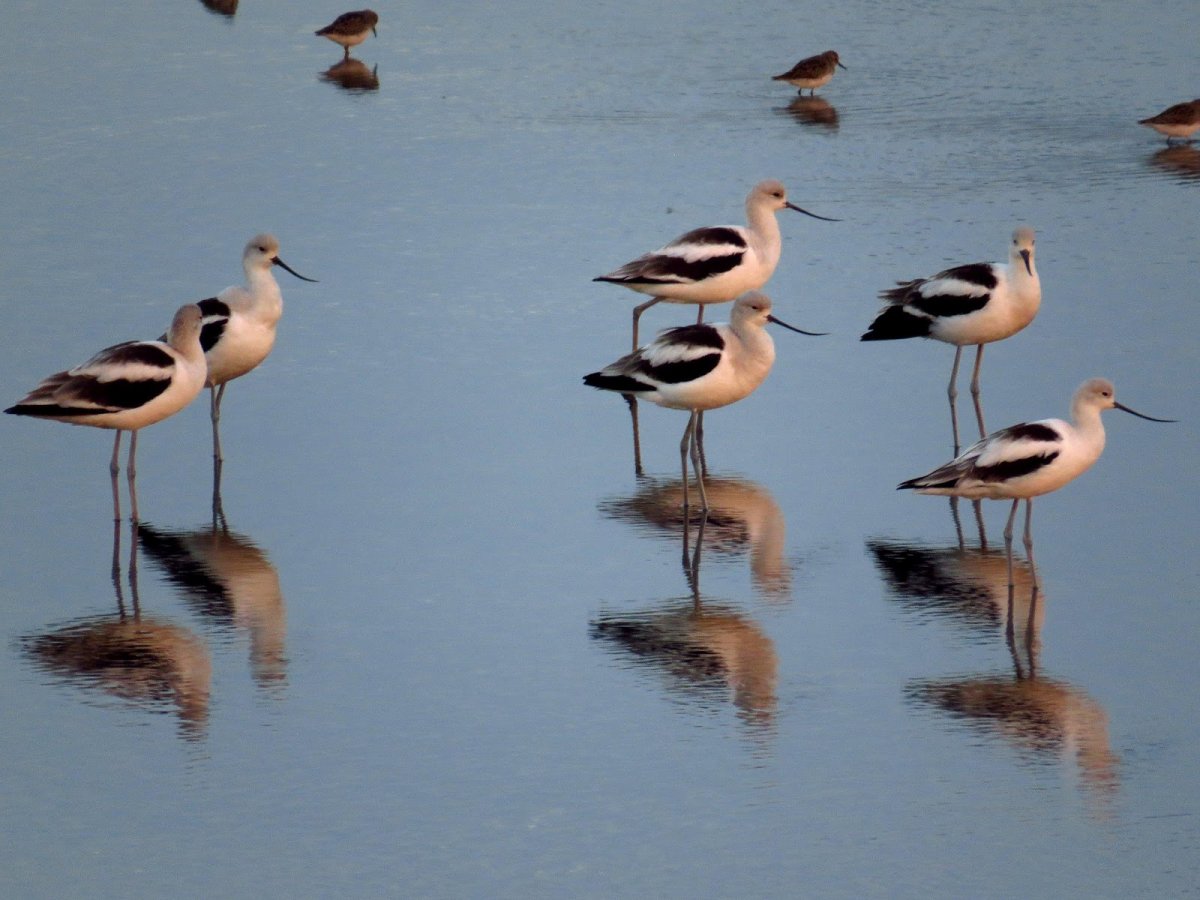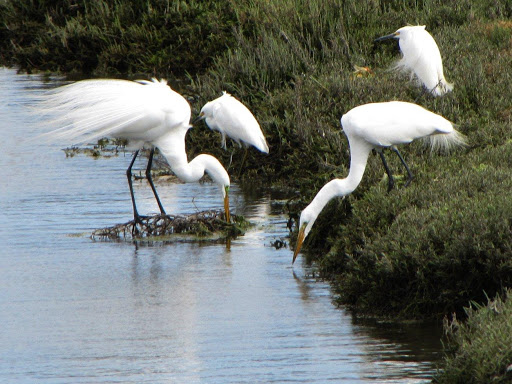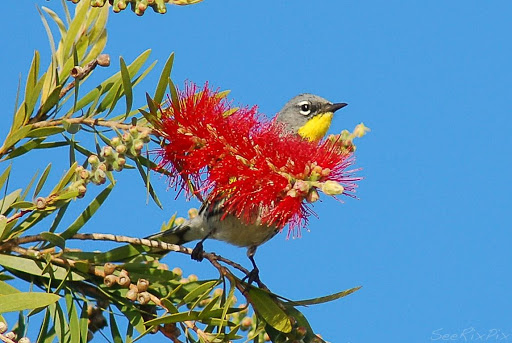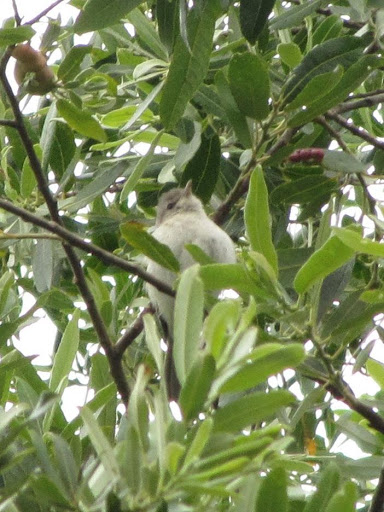An Introduction: Who's Here for the Winter? The Birds!

American Avocet; Jonathan Coffin all rights reserved
Great Blue Heron, Great Egret, and Snowy Egret are also easy to learn – especially if you have some hints like Snowy Egret has yellow feet and black beak; while Great Egret has black feet and yellow beak.

Great Egrets and Snowy Egrets photograph by Jonathan Coffin
Later, I learned about migrating songbirds that are here in LA and Orange Counties for the winter; birds like Yellow-rumped Warbler and White-crowned Sparrow. Nearly every yard sees these songbirds at some time during the winter, flying through or staying awhile for food or shelter.

Yellow-rumped Warbler photograph by Rick Pine
The Yellow-rumped Warbler is born in mid-elevation forested lands in Western North America. I learned the White-crowned Sparrow because I was told it was possible this bird was born in Yosemite (other national park or forest lands too, but Yosemite caught my attention).

White-crowned Sparrow in Saltmarsh Aster photography by Jonathan Coffin

Least Bell’s Vireo photograph by Jonathan Coffin

Short-eared Owl photograph by Jonathan Coffin
Marcia Hanscom has been a Sierra Club conservation and political leader for nearly 30 years. She received the Angeles Chapter’s highest conservation honor, the Weldon Heald Award, twice - for advocacy work on Bolsa Chica Wetlands and Ballona Wetlands.



Comments
Wendy-Sue Rosen (not verified)
January 8, 2021 - 12:11am
Permalink
Birding
Ann Cantrell (not verified)
January 11, 2021 - 5:24pm
Permalink
Article Who's Here for the Winter?
Amy Esposito (not verified)
January 12, 2021 - 9:00pm
Permalink
Thank you!
Add new comment